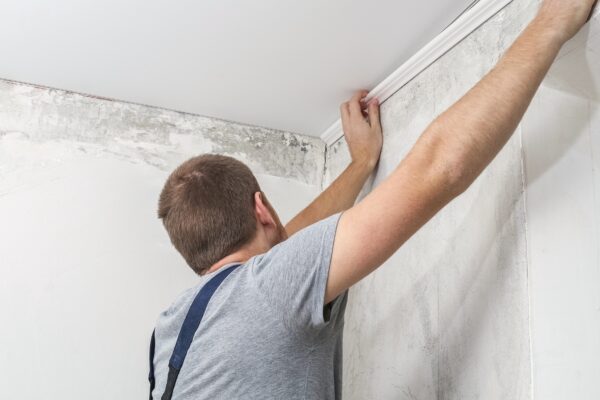As the temperature drops, it’s likely that those familiar small droplets will start appearing on your property’s windows, i.e., condensation.
Initially, it might not seem like a major issue, but if neglected, it can result in serious problems, including damp and mould, which are classified as hazards within the Housing Health & Safety Rating System (HHSRS).
So, let’s explore your duties as a landlord regarding these matters, along with some tips you can share with your tenants for addressing them.
- What are the landlord’s responsibilities for damp and mould?
- What are the tenant’s responsibilities for damp and mould?
Avoid expensive high street fees! Advertise your property with OpenRent and save thousands.
List Your Property Today
What are the landlord’s responsibilities for damp and mould?
According to government guidelines, landlords are required to treat damp and mould issues seriously; quickly pinpoint the underlying causes; take necessary steps; and keep tenants informed throughout the process.
Ultimately, landlords have the responsibility of preserving the building’s structural integrity and addressing sources of moisture to mitigate the risk of damp and mould.
This means you might be called to address a range of issues, from fixing leaking internal pipes to resolving problems like broken boilers and leaks from rotted window frames, among other things.
In some cases, you may even need to improve your property’s energy efficiency, even if it’s already at the minimum required EPC rating of ‘E’.
After the necessary remedial work is completed, you might also need to redecorate the rooms affected by the mould.
You might also be interested in…
- Guide to the Renters’ Rights Act for Landlords 2026
- How Much Can a Landlord Increase Rent in 2026?
- When Will Section 21 Be Scrapped?
- How to Conduct a Property Viewing Online
- 5 Mistakes Tenants Make in Their Property Enquiries (and How to Fix Them)
It’s a good idea to inspect the property about six weeks after the remedial work to confirm that the issue has been properly addressed and that damp and mould haven’t made a comeback.
Unfortunately, sometimes damp and mould may appear to vanish during the warm months of spring and summer, only to reappear when the weather turns chilly.
To steer clear of such problems, check out our in-depth guide for tips on both preventing and addressing mould and damp issues.
What are the tenant’s responsibilities for damp and mould?
Tenants must act in a ‘tenant-like manner’ when it comes to preventing and managing damp, mould and condensation issues.
Some practical recommendations for tenants include maintaining adequate heating in the property during colder months as well as avoiding drying clothes in bedrooms.
Having a tumble dryer is the most convenient option. However, if your house doesn’t have one, a good alternative is to dry clothes near a dehumidifier.
Tap into a large pool of tenants and fill your properties or rooms quickly.
It’s essential to regularly inspect for mould and use anti-mould products to remove it if it appears, particularly in areas like bathrooms, kitchens, and bedrooms.
It’s also advisable for landlords to foster open communication with tenants, encouraging them to report mould issues, as well as any other concerns.
Tenancy agreements may cover some of these responsibilities, such as heating the property adequately, but it’s always a good practice for landlords to remind tenants as the temperature drops.



